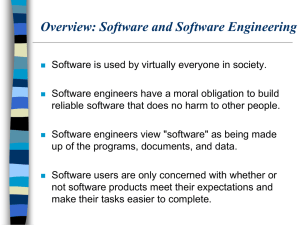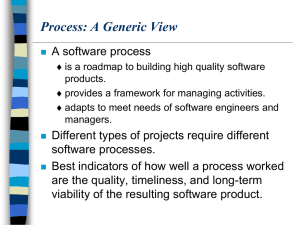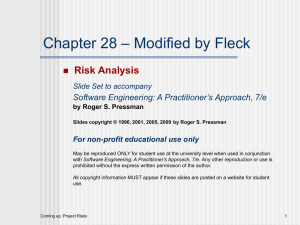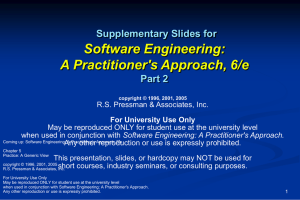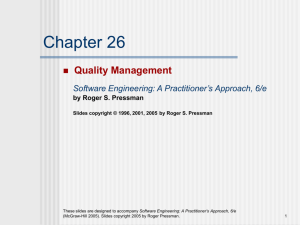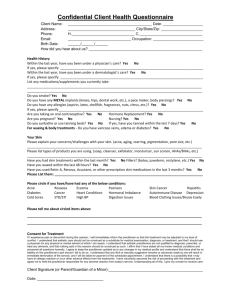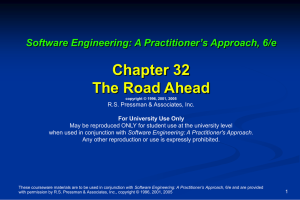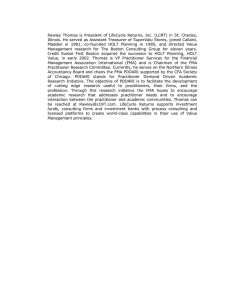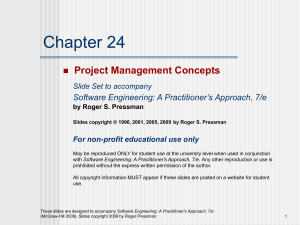Overview
advertisement
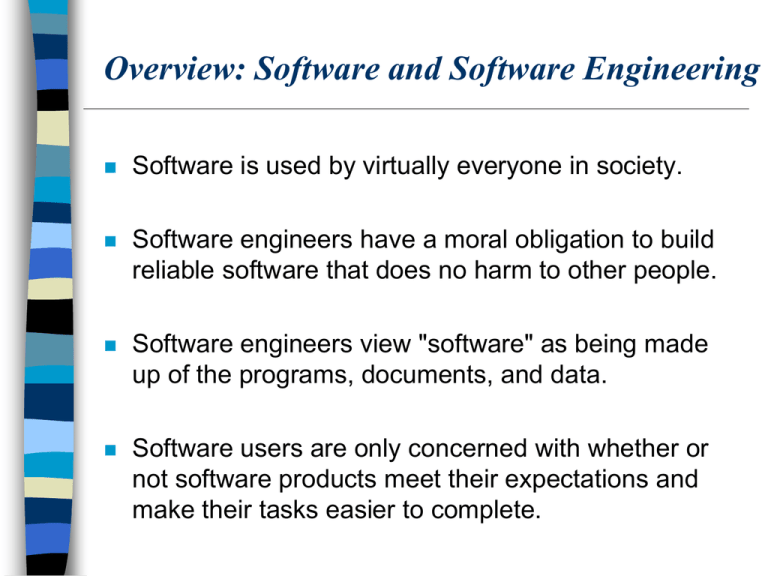
Overview: Software and Software Engineering Software is used by virtually everyone in society. Software engineers have a moral obligation to build reliable software that does no harm to other people. Software engineers view "software" as being made up of the programs, documents, and data. Software users are only concerned with whether or not software products meet their expectations and make their tasks easier to complete. Important Questions for Software Engineers Why does it take so long to get software finished? Why are development costs so high? Why can't we find all errors before we give the software to our customers? Why do we continue to have difficulty in measuring progress as software is being developed? Defining Software Software is (1) a product (applications); (2) documentation describing operation/use of product; and (3) a vehicle for delivering a product (OS, network control, software tools/IDEs, etc.) Software is developed/engineered not manufactured. Software does not wear out, but it does deteriorate. Currently, most software is still custom-built. Wear vs. Deterioration These slides are designed to accompany Software Engineering: A Practitioner’s Approach, 7/e (McGraw-Hill 2009). Slides copyright 2009 by Roger Pressman. 4 Software Application Types System software Application software (vertical software) Embedded software Engineering/Scientific software Product-line software (horizontal software) Web applications Artificial intelligence software New Software Challenges Ubiquitous computing Creating software to allow machines of all sizes to communicate with each other across vast networks Net sourcing Architecting simple and sophisticated applications that benefit targeted end-user markets worldwide Open Source Distributing source code for computing applications so customers can make local modifications easily and reliably New economy Building applications that facilitate mass communication and mass product distribution using evolving concepts Legacy software Many programs still provide a valuable business benefit, even though they are one or even two decades old. Software must be adapted, enhanced, extended and re-architected. These programs must be maintained and this creates problems because their design is often not amenable to change. Software Creation Almost every software project is precipitated by a business need (e.g., correct a system defect, adapt system to changing environment, extend existing system, create new system) Many times an engineering effort will only succeed if the software created for the project succeeds The market will only accept a product that has the software embedded when it meets the customer's stated or unstated needs Software Engineering Software engineering is the establishment and application of sound engineering principles to obtain reliable and efficient software in an economical manner. Software engineering is the application of a systematic, disciplined, quantifiable approach to the development, operation, and maintenance of software. Software engineering encompasses a process, management techniques, technical methods, and the use of tools. Engineering or Science? Scientific view: study of phenomena that affect the production of software (identify new knowledge, invent) Engineering view: concerned with developing quality software efficiently and economically (use proven existing techniques to solve everyday problems) A Layered Technology tools methods process model a “quality” focus Software Engineering These slides are designed to accompany Software Engineering: A Practitioner’s Approach, 7/e (McGraw-Hill 2009). Slides copyright 2009 by Roger Pressman. 11 Software Engineering Problem Solving Aids: • process (phases you go through) Examples: waterfall, spiral, prototyping, PSP • procedure (pre-selected methods and tools used together Exs. Structure A/D, OOP; defined within organization • method/technique (guideline for activity) Exs: CMM, ERD, DFD, Review Methods • set of tools for developing software Examples: Rational rose, TogetherSoft Factors behind Emergence of SE Inability to predict time, effort, costs Inability to deliver quality (defect free) Changes in ratio of HW to SW costs Important role of maintenance Demand for more complex SW (average people can solve simple problems, so we look for more complex ones) Distributed systems What makes SW Development difficult? Novelty of application Communication Sequential nature of development Constraints on behavior add to complexity Change is more difficult than it appears (ripple effects, different models) Problems not well-defined Desired qualities may not coincide Software Myths: Management: standards exist, tools available, more programmers to catch up Customer: general objectives ok, software can easily accommodate changes in requirements because it is flexible Practitioner: done when program works, can’t quality assess non-running program, only deliverable is program, documentation slows us down Software Myths Still believed by many managers and practitioners Insidious because they do have elements of truth Every practitioner and manager should understand the reality of the software business.
